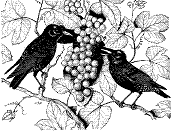Vertebrate Pest Conference Proceedings collection
Date of this Version
March 1978
Document Type
Article
Abstract
The remarkable increase in the number of colonies of edible dormouse (Glis glis L.) registered in the litoranean industrial cultivations of Pinus pinea L. in northern Tuscany over the last ten years and the grave damage to the production of pine-seeds consequent on it has created the necessity of studying systems which may reduce the dormouse menace. Going on what has previously been discovered about the habits of the species in this particular habitat, three different methods of control were experimented: direct capture in their nests, which were in this case cavities in the tree trunks which woodpeckers' activities had made accessible to the dormice; capture by means of specially built artificial nests; distribution of bait composed of pine seeds poisoned with chlorophacinone. All three systems - the first two of which can be conveniently used together - are worth further investigation and experiment, considering their results, to examine their individual advantages.


